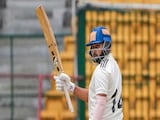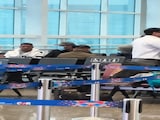Soon after the Indian Space Research Organisation (ISRO) placed the Aditya-L1 spacecraft into its final destination orbit, ISRO chief S Somanath said that the crucial mission was not just for India alone but for the entire world.
"The solar mission, Aditya-L1 is for the whole of the world, not for India alone, for all of us to understand and make use of its scientific importance," Mr Somanath said while speaking to ANI on Saturday.
The ISRO chief said scientists had to make several corrections so that the space satellite could be placed at the precise point.
"Today's event was only placing the Aditya-L1 in the precise Halo orbit. So it was moving towards a high orbit, but we had to do a little bit of corrections to put it in the right place. So something like 31 metres per second velocity had to be given cumulatively to the satellite to keep it at the right orientation," Somanath said.
Speaking on the halo orbit, Mr Somanath said, "The halo orbit is an orbit which moves around L1 point with a size of 6 lakh kilometres in one dimension and one lakh kilometres in another dimension. So it is like an egg. We had to place it in the new orbit. It has to be precisely put."
The ISRO chief said that if the satellite is not correctly placed at the precise location it can escape from the point.
"If we do not the correction today it will escape from this point. We will not allow it to escape. There are some contingencies. But mathematically it can escape. So that has been very precisely done. Today we achieved exact placement based on our measurement and very correct prediction of velocity requirement...So right now, in our calculation, it is at the right place," Somnath said.
The ISRO chief however cautioned that his team is going to monitor it for the next few hours to check for drifts. He added that corrections may be needed if it is slightly drifted from its place.
"But we are going to monitor it for the next few hours to see whether it is at the right place. Then if it is slightly drifted, we may have to do a little bit of correction. We don't expect that to happen...," Mr Somnath said.
On ISRO's Solar Mission Aditya-L1 entering Halo Orbit, Former ISRO Chief Dr G Madhavan Nair says, "The thrusters be fired in such a way that the spacecraft takes a stable orbit at the Lagrangian point from which the observation of the sun can be made uninterrupted, continuously for next few years. The journey commenced in September and while it is going towards the sun, most of the instruments have been calibrated, and they have sent some x-ray images as well as other particle counts as well. So that shows the spacecraft is in healthy condition. And once it is in a stable orbit, it will be able to carry out the indented observation of the solar corona phenomena as well as the photosphere and the various activities, especially the solar winds and related radiation..."
Meanwhile, speaking on the solar mission, former ISRO Chairman G Madhavan Nair said that the spacecraft should take a stable orbit at the Lagrangian point so that the sun can be observed uninterruptedly for the next few years.
"The thrusters be fired in such a way that the spacecraft takes a stable orbit at the Lagrangian point from which the observation of the sun can be made uninterrupted, continuously for next few years," Madhavan Nair said, speaking to ANI in Thiruvananthapuram.
The former ISRO chief said that while on its journey, most of the instruments were calibrated, which shows that the spacecraft is in healthy condition.
"The journey commenced in September and while it is going towards the sun, most of the instruments have been calibrated, and they have sent some x-ray images as well as other particle counts as well. So that shows the spacecraft is in healthy condition," Madhavan Nair said.
Nair also pointed out that once in a stable orbit, the solar orbit can then observe the solar corona phenomena as well as the photosphere.
"And once it is in a stable orbit, it will be able to carry out the indented observation of the solar corona phenomena as well as the photosphere and the various activities, especially the solar winds and related radiation...," the former ISRO chief said.
In a significant scientific milestone, ISRO on Saturday injected the Aditya-L1 spacecraft - the first dedicated solar mission - into its final destination orbit.
(Except for the headline, this story has not been edited by NDTV staff and is published from a syndicated feed.)















